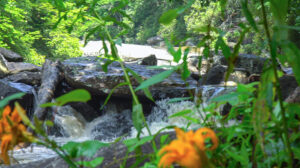 Figuring out when to visit the Amazon is not always as simple as booking a flight and selecting a hotel. After all, the ecosystem that spans eight of South America’s countries is one of the planet’s most diverse regions. How you time your visit will determine what you see, how you travel, and the types of adventures you’ll experience.
Figuring out when to visit the Amazon is not always as simple as booking a flight and selecting a hotel. After all, the ecosystem that spans eight of South America’s countries is one of the planet’s most diverse regions. How you time your visit will determine what you see, how you travel, and the types of adventures you’ll experience.
Dry and rainy are the two primary Amazon seasons, with each offering its own unique opportunities and challenges. Whether you prefer paddling through forests, trekking jungle trails, or making the most of wildlife encounters, choosing Amazon rainforest tours that align with your interests can transform your journey. Here are the best times to visit the Amazon.
The Dry Season: Easier Hiking, Harder Navigation
Generally, the Amazon’s dry season runs from June to November, although precise timing can vary by region. While rainfall doesn’t stop entirely, water levels drop and trails become more accessible. If you favor ground-based exploration, walking expeditions, and the opportunity to cover more ground on foot, this is an ideal time to come.
Trails that would be under water during the rainy months open, allowing you to access deeper parts of the jungle. This is conducive to activities such as birdwatching, visiting indigenous villages, and spotting terrestrial wildlife. Monkeys, jaguars and tapirs are easier to meet during the dry season. Waters recede and draw them closer to clearings and riverbanks. Fishing is also especially good during this period, as the receding rivers concentrate aquatic life into smaller waterways.
There are trade-offs, however. Rivers and tributaries are harder to reach by boat and large vessels may be limited to main channels. This can make travel can take longer. While you may enjoy more stable trekking conditions, boat distances will be restricted.
The Rainy Season: Rising Waters and Expansive Exploration
The Amazon enters its wet season between December and May. That means frequent downpours that transform the forest in fascinating ways. Tributaries and rivers swell, at times rising to 30 feet. Floodplains expand, creating vast networks of waterways.
If you’re interested in boat-based exploration, this may be the best time to visit. Canoes and small motorboats can glide straight into flooded forests, weaving between tree trunks, offering rare perspectives.
Higher waters bring greater access to remote and otherwise inaccessible areas of the forest. Explorations can be smoother because boats need not stop where dry land trails end; instead, an infinite watery labyrinth reveals itself. This expanded reach increases the chances of spotting certain wildlife, including three-toed sloths and pink river dolphins, at closer eye-level from boat decks.
For hiking enthusiasts, there are challenges, however. Water can submerge or muddy trails, limiting walking safaris and making it almost impossible to access some overland wildlife viewing sites. Mosquitos and other insects are also more abundant, requiring you to take extra precautions. Still, the forest’s lushness at this time of year can be breathtaking.
Choosing
Ultimately, there is no single “best” time for Amazon rainforest tours. It all comes down to the kind of experience you want. The dry season is conducive to land-based exploration, longer treks, and terrestrial wildlife sightings. Meanwhile, the rainy season turns the jungle into a watery world ideal for boat adventures and unique forest perspectives. Both seasons are magical. Aligning your travel dates with your interests—whether that is getting through trails on foot or meandering by canoe—you can ensure the Amazon reveals itself in the way you’ll treasure most.


